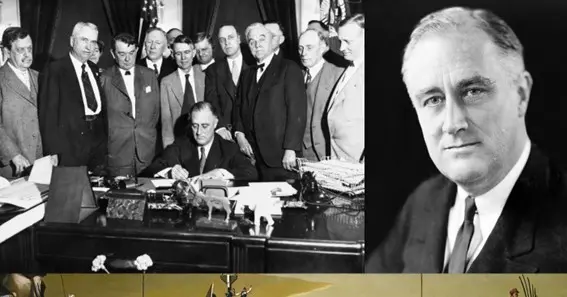The p.w.a. sewer columbus ohio 1934 project stands as a remarkable example of New Deal-era innovation and community transformation. Amid the Great Depression, the Public Works Administration (PWA) initiated several ambitious infrastructure projects, and the sewer upgrade in Columbus was one of them. This project not only improved sanitation and urban infrastructure but also provided vital employment opportunities during a challenging economic period.
Historical Context and the New Deal
In the early 1930s, the United States was grappling with the economic hardships of the Great Depression. The New Deal, introduced by President Franklin D. Roosevelt, aimed to stimulate the economy through public works and infrastructure projects. The PWA was a cornerstone of this initiative, financing projects that would modernize cities, improve public health, and create jobs. Columbus, Ohio, benefited significantly from these investments, with the sewer project in 1934 marking a major step in transforming the city’s infrastructure.
The P.W.A. Sewer Columbus Ohio 1934 Project: Scope and Impact
Project Overview
The p.w.a. sewer columbus ohio 1934 project was designed to overhaul Columbus’s aging sewer system. Key goals of the project included:
- Modernization of Infrastructure: Replacing outdated sewer lines with modern materials and construction techniques.
- Improved Public Health: Enhancing sanitation systems to reduce disease and improve living conditions.
- Economic Stimulus: Creating jobs during the Great Depression and boosting local economic activity.
Engineering and Design Innovations
Engineers and city planners incorporated several innovations in the project:
- Advanced Materials: The use of reinforced concrete and other durable materials ensures longevity and reliability.
- Improved Layouts: Redesigned sewer networks optimized flow and maintenance, addressing long-standing issues with blockages and leaks.
- Scalability: The project was designed with future expansion in mind, anticipating the growing needs of Columbus’s population.
Economic and Social Impact
The implementation of the sewer system in 1934 had wide-reaching effects on Columbus:
- Job Creation: The project provided employment opportunities for thousands of workers, offering much-needed relief during economic hardship.
- Urban Renewal: Modernized infrastructure attracted new businesses and residents, fostering urban renewal and growth.
- Public Health Advancements: Better sewage management led to cleaner urban environments, reducing the prevalence of waterborne diseases and improving overall community health.
Legacy and Preservation Efforts
Today, the legacy of the p.w.a. sewer columbus ohio 1934 project is still evident. While many of the original structures have been upgraded or replaced, the project laid the foundation for Columbus’s modern sewage system. Preservation societies and local historians continue to document and celebrate the contributions of New Deal projects, ensuring that the importance of these infrastructure improvements is not forgotten.
Frequently Asked Questions (FAQs)
-
What was the P.W.A. Sewer Columbus Ohio 1934 project?
The project was a major New Deal initiative funded by the Public Works Administration to modernize Columbus’s sewer system in 1934. It aimed to improve sanitation, create jobs, and stimulate economic recovery during the Great Depression. -
Why was the project significant for Columbus?
The overhaul of the sewer system had lasting impacts on public health, urban development, and the local economy. By addressing critical infrastructure needs, the project helped revitalize the city and set the stage for future growth. -
What were some of the engineering innovations introduced during the project?
The project featured the use of advanced materials like reinforced concrete, redesigned sewer networks for optimal flow, and construction techniques that ensured scalability and longevity. -
How did the project contribute to economic recovery during the Great Depression?
By creating thousands of jobs and improving urban infrastructure, the project provided essential economic stimulus at a time when the country was facing widespread unemployment and economic uncertainty. -
Where can I learn more about New Deal projects in Columbus and similar initiatives?
For further reading, consider exploring resources from local historical societies, the National Archives, and reputable publications on New Deal history. Websites such as the Library of Congress and Ohio History Central offer valuable insights.










